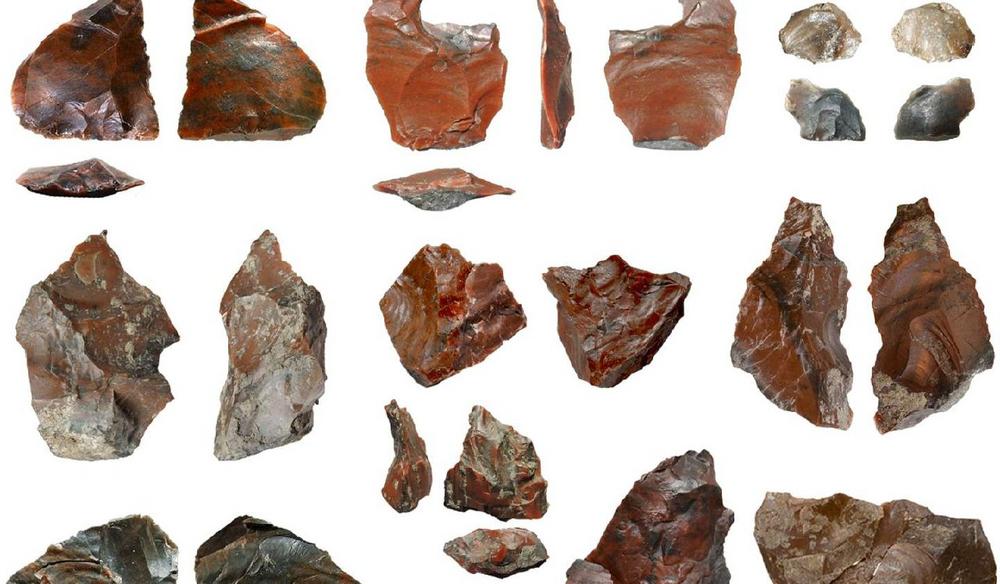Small Tools, Big Animals: 430,000-year-old Butchery Investigated

Breaking News:
Kathmandu Nepal
Samstag, Dez. 20, 2025

The currently oldest known archaeological site in Greece is located in the Megalopolis region in the central Peloponnese (Arcadia, Greece). “The Marathousa 1 site, located in the open air, was discovered just over ten years ago and has been dated to an age of around 430,000 years,” explains Dalila De Caro, the study’s first author and a doctoral candidate in the Department of Paleoanthropology at the University of Tübingen, and she continues, “The site offers a rare opportunity to study human behavior in southern Europe during the Middle Pleistocene.”
Together with other researchers from the University of Tübingen, the Senckenberg Centre for Human Evolution and Palaeoenvironment (SHEP), the Greek University of Ioannina, and the Department of Palaeoanthropology and Speleology of the Greek Ministry of Culture and Sport, De Caro examined stone tools from the site, which were found together with animal bones – especially the remains of prehistoric elephants. “We wanted to find out how Middle Pleistocene hominins made their tools and organized the production. We were also interested in how the resource-rich environment of the Megalopolis Basin – with abundant water, raw materials, and animals – influenced their behavior,” explains De Caro.
“The bones of the large animal fauna show signs of cutting and impact marks – clear evidence of the dismembering and processing of the animals by humans. The site therefore provides important testimony to the hominin way of life in the Middle Pleistocene,” adds SHEP researcher Prof. Dr. Katerina Harvati.
The research team reconstructed the manufacturing processes of the stone tools at the site through a combination of technological analyses, experimental replicas of stone processing, and the examination of the raw materials used. The tools were predominantly made from local radiolarite, a very hard rock suitable for creating lithic flakes. They included both simple flakes and reworked tools. “Our results show that 430,000 years ago, people combined different tool-making techniques. So-called freehand striking was mainly used to create small, sharp-edged flakes, while the ‘bipolar technique’ – in which the stone is placed on a kind of anvil and struck from above – was applied to make the most efficient use of the raw material,” explains De Caro.
Particularly noticeable is the direct strike for the systematic production of small tools – not only from the dominant radiolarite, but also from limestone, flint, and quartz, according to the study. The small flakes were apparently versatile and confirm earlier studies on the effectiveness of these “microliths.” Experiments show that these radiolarite chips are very efficient for dismembering animals. In some cases, the Marathousa 1 flakes were also further processed to produce tools such as scrapers, toothed implements, or drills. “Our findings clearly show that small tools are not a sign of simplistic technology – on the contrary, they reflect a well-thought-out adaptation to the requirements of the respective environment,” adds last author Dr. Vangelis Tourloukis from the Universities of Tübingen and Ioannina.
“A key finding of our study is that Marathousa 1 reveals a direct link between small tools and the remains of the prehistoric elephant Palaeoloxodon antiquus. This clearly demonstrates that the dismemberment of animal carcasses was one of the most important activities of the people living on the shores of the prehistoric lake of Megalopolis. The flexibility in the production of the tools required for this purpose shows how well these hominins adapted to their environment and efficiently used the available raw materials,” summarizes De Caro, and she provides an outlook, “In the future, we would like to clarify how such behavioral patterns developed in other parts of Eurasia and what role environmental factors played in this.”
Publication: De Caro D, Kuhn M, Thompson N, Panagopoulou E, Harvati K, Tourloukis V (2025): Small flakes for sharp needs: Technological behaviour in the Lower Palaeolithic site of Marathousa 1, Greece. PLoS One 20(6): e0324958. https://doi.org/10.1371/journal.pone.0324958
Senckenberg – Leibniz Institution for Biodiversity and Earth System Research // Senckenberg Gesellschaft für Naturforschung
Senckenberganlage 25
60325 Frankfurt
Telefon: +49 (69) 7542-0
Telefax: +49 (69) 746238
http://www.senckenberg.de
![]()